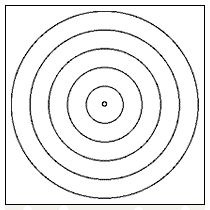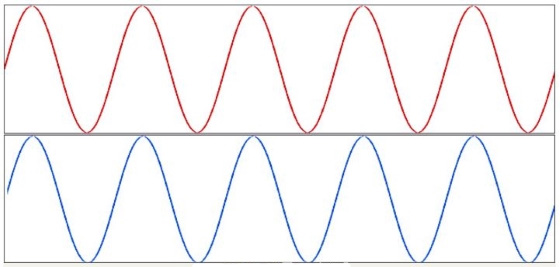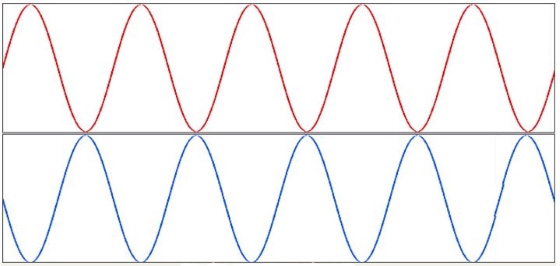
.
Has your mix ever sounded “not quite right” but you can’t quite put your finger on it? You might be experiencing phase cancellation, a phenomenon that can make certain frequencies vanish from your mix. To help you out, this Studio Basics article will help you understand phase — what it is, why it matters, and what it means to be out of it.
This article delivers some basics on the subject of sound waves and phase cancellation, and how those issues affect the recording and mixdown process. It isn’t intended to be a comprehensive study of the physics of sound waves, but is designed to help beginning recordists avoid some common pitfalls resulting from poor mic placement, reversed polarity, and other common issues.
The Laws Of Physics
At its most basic, phase refers to sound waves — simply put, the vibration of air. When we listen to sound, what we’re hearing are changes in air pressure. Just like the ripple of a stone in water, sound is created by the movement of air. And just as in water, those movements cause a rippling effect — waves comprised of peaks and troughs. Those waves cause our eardrums to vibrate, and our brains translate that information into sounds.

When we record sound, the diaphragms in our microphones essentially replicate the action of our eardrums, vibrating in accordance with those waves. The waves’ peaks cause the mic’s diaphragm to move in one direction, while their troughs generate movement in the opposite direction.
It’s Just A Phase…
Phase becomes an issue when more than one channel is used to record a single source, such as stereo micing a guitar, multi-micing a drumset, or using a microphone/DI combo for bass. Recording “mono overdub style” avoids these issues, but doesn’t give you a dynamic stereo field. In fact, the problem most often manifests itself in when converting tracks from stereo to mono.
Example 1 shows what happens when we’ve got two channels of a signal in phase. When both channels are in phase, we hear the sound at the same amplitude level at the same time in both ears.

But if one side of the stereo signal is reversed, as shown in Example 2, the signals will literally cancel each other out. In fact, if we were using a pure sine wave, combining both signals out of phase would result in absolutely nothing — silence — since the sounds would literally cancel each other out.

In the real world, of course, we normally don’t listen to pure sine waves. Since most of the music we hear and the instruments we record are a complex combination of multiple waves and harmonics, the results of phase cancellation will be equally complex.
For The Listener
For the average casual listener, phase cancellation can occur by simply wiring speakers incorrectly, inadvertently reversing the polarity of one channel. It’s surprising how many home stereos — and even project studios — have their monitors wired out of phase.
In some circumstances, it may not even be apparent without careful listening. Though this is commonly referred to as “out of phase wiring,” technically-speaking it’s an issue of polarity. That said, the audible effect of this polarity reversal is the same as you get with phase cancellation.
The easiest way to check your speakers is to sum your mix to mono (more on this later). Many stereos and most mixing consoles allow you to do this with a simple click or button press. But even in stereo, there are some telltale signs of phase problems.
What does a phase problem sound like? Since phase cancellation is most apparent in low frequency sounds, the audible result of out of phase monitors is typically a thin-sounding signal with little or no bass sound. Another possible result is that the kick drum or bass guitar will lack localization. For example, a kick might appear to move around within the mix, rather than coming from a single spot.
Another common artifact of out of phase stereo mixes is where signals panned to the center disappear, while sounds panned hard to one side remain. Often this will be the case with a lead vocal or instrument solo — the main part will vanish, leaving only the reverb. In fact, this is how many of those old “remove the lead vocal” karaoke boxes work — they flip the phase of one side of the stereo mix, relying on the assumption that in most commercially recorded tracks, the lead vocal is panned dead center.




















